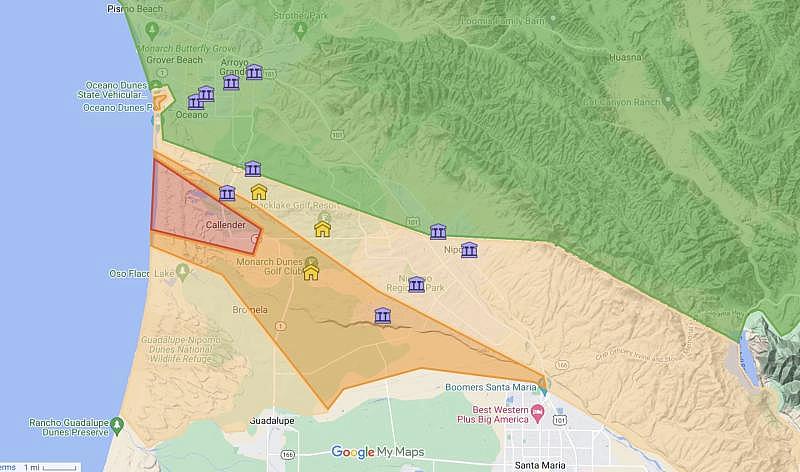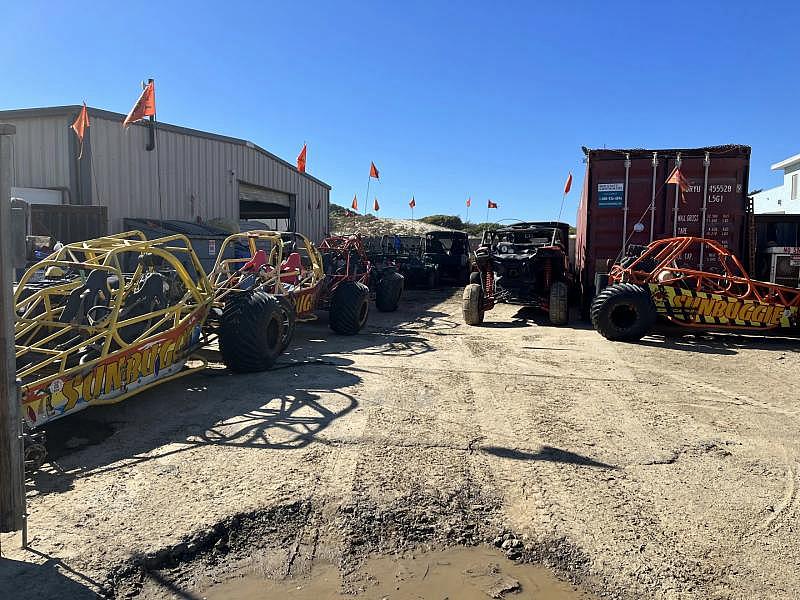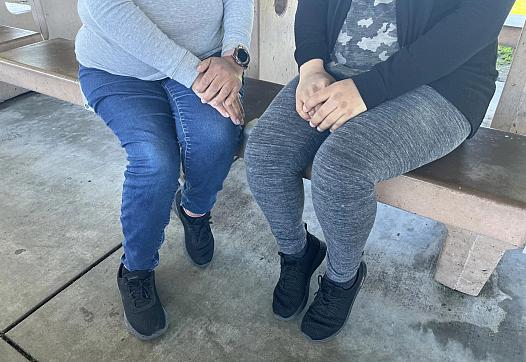Clouded in Crisis: The search for solutions to help Nipomo Mesa communities breathe better air
This story was originally published in KCBX with support from the 2022 California Fellowship.

Re-vegetation efforts on the Oceano Dunes help prevent dust and sand from blowing inland and polluting the air.
Benjamin Purper /
Exposure to air pollution has long been a public health issue for people in South San Luis Obispo County.
Historically marginalized local communities are disproportionately harmed by pollution in the air they breathe every day.
There is no cure-all for the health impacts people on the Mesa are experiencing. But the problem is well-known locally and across the state.
State environmental agencies list the Nipomo Mesa as a community that is disproportionately burdened by — and more sensitive to — multiple sources of pollution including air pollution.
“With the Oceano Dunes, especially during very windy days, we see high levels of airborne particulate matter. That really is sand and minerals,” said Meghan Field with the San Luis Obispo County Air Pollution Control District (APCD).
Field said the agency has a lot in the works to help protect the general health of communities on the Mesa because blowing dust can have long-lasting impacts.

“It can go on for long periods of time when we’re having the windy seasons like we’re experiencing right now,” Field said.
One solution for residents impacted by those windy seasons could be getting more doctors into the area. As we heard last week, the Central Coast will be especially hard-hit by the worsening doctor shortage in California, so local leaders are working on ways to attract and keep medical students in this area.
Another one of the local Air Pollution Control District’s solutions is a text alert system that allows people to sign up for notifications, called “Better Breather Alerts,” when the air quality is particularly bad.
“What we try to tell people — and it’s hard again for those outdoor workers — is if air pollution is really bad, they need to try to head indoors,” Field said.
As we’ve heard throughout this series, that isn’t always an option for people working on the Mesa, especially in agriculture. But the APCD also recently conducted a pilot program in Nipomo and Oceano to help improve the air quality inside homes in the area.
“We were able to provide free HEPA air purifiers to low-income households within those areas," Field said. "We were able to get just under 600 devices out in the community.”
Field said the goal is to expand the program and offer it across the county. Though, some people in the community say they are skeptical about the program because they are wary of showing proof of income to qualify for the purifiers.
Soledad, who we’ve heard from previously, is undocumented and picks fruit on the Mesa for work. She said even if she were to get a purifier, she’s not sure it would do much for her if she is still working outside every day.
"In my case, I'd like to have one at home. But the air outside is still contaminated," she said.
Still, Field said purifying the air inside your home is a start and it’s much easier to control than outside air quality.
But in an effort to reduce particulate matter in the air outside, the APCD has also been working with State Parks to implement dust mitigation tactics on the Oceano Dunes.
According to Field, the air quality is better than it was five or ten years ago.
“That tells me that what we’re doing out on the Dunes, is working," Field said. "So we are making positive steps in the right direction to decrease the exposure to those downwind communities.”

Some of the dust mitigation tactics include temporary fence installation and permanent re-vegetation. There is also an ongoing effort by the California Coastal Commission to phase out Off-Highway Vehicle use on the dunes, as it partially contributes to the extra dust in the air.
Though, both Maria and Soledad, who live and work on the Mesa, said they don’t want to advocate for ending off-highway vehicle recreation on the dunes, even if it worsens the air quality and their health. She said reducing tourism and eliminating jobs would change the way the economy works on the Mesa, so she is concerned about cutting it out entirely.
"It would stop tourism, stop jobs, and people would rather have a job — maybe more than having good health. Here, people medicate themselves how they can, because lots of people don’t have health insurance. In my case, I try not to leave my house if I don't have to," she said.
Both Maria and Soledad agree, if they could change one thing, it would just be the cost of inhalers and allergy medication.
"I think that here, the way to help would be a low cost in medications — especially for allergies and the flu," Soledad said.
As we’ve heard over the course of this series, the issue of polluted air on the Nipomo Mesa is multifaceted — with people of color and low-income folks being hit harder than other communities. For all the possible solutions, there are barriers that put people more at-risk of exposure and less able to access healthcare.
But people are working toward a future with cleaner air. Still, people like Maria and Soledad, who live and work on the Mesa, continue to breathe in pollutants. We’ve covered some ways the community can solve this problem, but until it’s really managed, thousands of people in Oceano, Nipomo, Guadalupe and Santa Maria will remain clouded in crisis.

